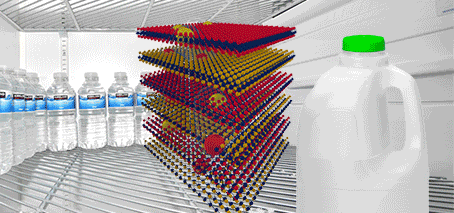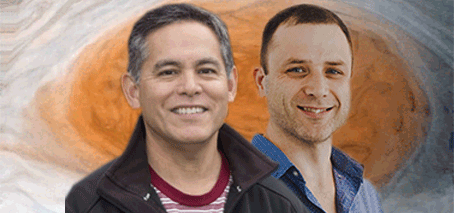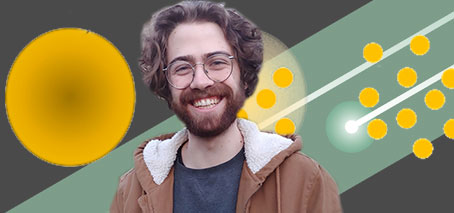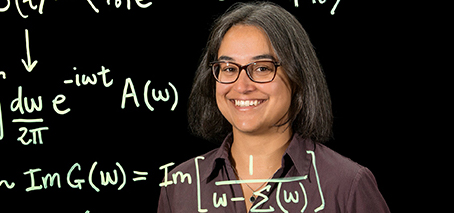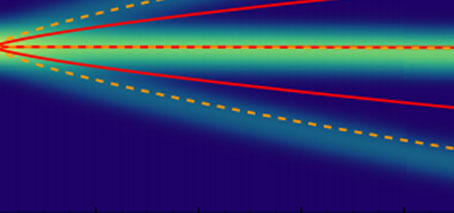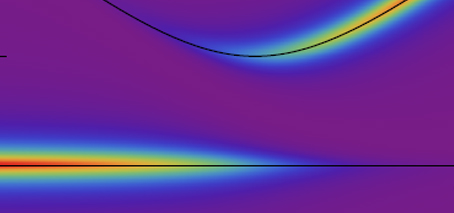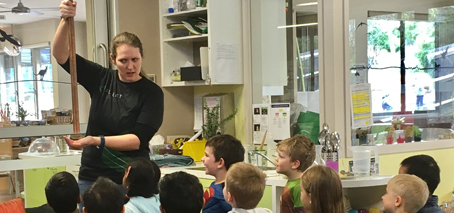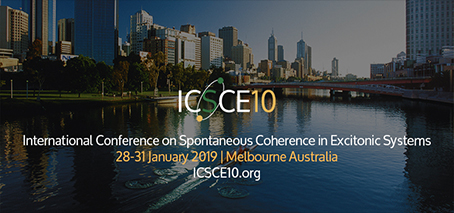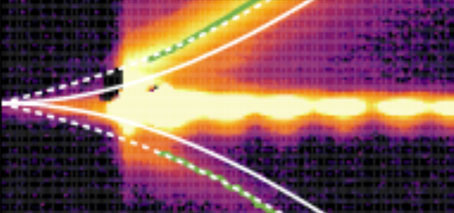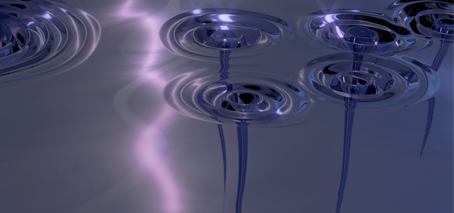Amorphous materials have recently been theoretically predicted to have topologically protected states [1,2]. These results are contrary to the well understood mechanisms that topological states originate from a material’s electronic band structure which requires certain symmetries to be present. Additionally, amorphous materials often allow for the synthesis of non-equilibrium compositions or doping concentrations that are not accessible in crystalline systems. …
Using Light to Probe and Manipulate Topologically Non-Trivial States
In this talk I will present the case for using high-electric field, ultrashort femtosecond pulses of light to controllably switch the behaviour of topologically interesting systems such as the Dirac semimetal, graphene. I will also outline our research efforts in this space and why quasi-single cycle terahertz probe pulses provide a unique window into the dynamics and optical properties …
Room-temperature polaritonics in FLEET
Exciton-polaritons (polaritons herein) are bosonic quasiparticles with unique physical properties arising from strong coupling between excitons and confined photons. Since their first demonstration, exciton-polaritons became a convenient platform for studies of collective quantum effects such as Bose-Einstein condensation and superfluidity. To date, the most striking effects were cleanly demonstrated in GaAs- based microcavities due to the very low defect densities …
Universal scaling of a quenched 2D Bose gas
We numerically study the phase ordering dynamics of a uniform 2D Bose gas following a quench into the superfluid phase, using the classical field methodology. We explore the crossover between conservative and dissipative evolution, finding clear evidence for universal behaviour in the dynamics, regardless of the dissipation strength. This universal behaviour manifests as a power-law growth of the correlation length …
Polariton-Polariton Interaction: a four-body calculation
About the presenter Dr Guangyao Li is a postdoc researcher working with A/Prof Meera Parish and Dr Jesper Levinsen at Monash University within FLEET’s Research themes 2 (exciton superfluids) and 3 (light-transformed materials). His research interests include dynamics of polariton condensates, chiral states at exceptional points, topological excitations in open-dissipative superfluid, and the spin-orbit interaction of light.
Toward high-performance tungsten diselenide field-effect transistors
About the presenter Yi-Hsun Chen is an experimental physicist working with Prof Michael Fuhrer and Dr Chen Shao-Yu at Monash University, where he researches Bose-Einstein condensates using devices constructed using 2D materials, seeking exciton superfluids in 2D material quantum wells. His research falls under FLEET research theme 2 exciton superfluids. For his PhD project, he is using 2D materials to create …
Topological spin-plasma waves at the interface of a topological insulator and a magnet
About the presenter Dr Dmitry Efimkin is a Scientific Associate Investigator at Monash University specialising in novel materials such as Dirac materials, graphene and topological insulators, and optical phenomena in solids. Within FLEET, Dmitry works with Michael Fuhrer, Meera Parish, and Nkhil Medhekar in Research theme 2: exciton superfluids and Enabling technology A: atomically-thin materials, studying optical and collective phenomena …
Progress Towards The Australian Quantum Gas Microscope
About the presenter Allan Pennings is a PhD Student working with Prof Chris Vale and Dr Sascha Hoinka, with the goal of building the Australian Quantum Gas Microscope. Contributing to FLEET’s Research Theme 3, Light-transformed Materials, his project focused on different techniques of dark field imaging with X-rays. Allan recently completed his Honours at Monash followed a Bachelor of Science (Physics) …
Non-equilibrium dynamics of a quenched Fermi gas
About the presenter Dr Ivan Herrera is a Research Fellow at Swinburne University of Technology who performs experimental research to investigate universal phenomena at the few-body and many-body level in ultracold 2D gases of fermionic atoms. Ivan works within Research Theme 3: Light-transformed materials with CI Chris Vale.
Measurement of the non-Hermitian topological invariant in perovskite-based exciton polaritons
About the presenter Eliezer Estrecho studies the behaviour of exciton-polaritons as part of FLEET’s research theme 2, exciton superfluids, working with Elena Ostrovskaya at the ANU. He is currently studying condensation of polaritons in gallium-arsenide-based microcavities using single-shot experiments and large optically induced traps. He is also working on creating polariton condensates using atomically-thin materials.
Diisopropylamine-enabled fabrication of high-quality 2D heterostructures
About the speakerDr Shao-Yu Chen is a research fellow working with Prof Michael Fuhrer at Monash University to realising Bose-Einstein Condensation of tightly bound excitons in 2D semiconductors. He has extensive research experiences on transport and optical measurement on 2D materials including graphene and transition metal dichalcogenides (TMDs). In particular, he has investigated strong Coulomb interaction and many-body correlation in …
ARC funding for FLEET investigators
Australia’s Minister for Education Dan Tehan announced $280 million in funding for new research collaborations to start next year. This month’s ARC Discovery Project and Linkage Project funding announcement includes eight grants for projects and facilities led by or involving FLEET researchers. While these projects are distinct from FLEET’s mission to build low-energy electronics, they testify to the capacity FLEET …
Kitchen-temperature supercurrents from stacked 2D materials
Could a stack of 2D materials allow for supercurrents at ground-breakingly warm temperatures, easily achievable in the household kitchen? An international study published in August opens a new route to high-temperature supercurrents at temperatures as ‘warm’ as inside a kitchen fridge. The ultimate aim is to achieve superconductivity (ie, electrical current without any energy loss to resistance) at a reasonable …
FLEET Strategic Workshop
Members Only Event FLEET’s annual strategic workshop this year will be held online **NOT ZOOM**, and it will be fun and interactive! :-). Sneak peek of the venue below: With the goal to review the Centre strategic plan and an opportunity to provide the membership an update on progress of FLEET milestones. We will have two 90 minutes sessions with an …
FLEET physics a finalist in 2020 Eureka prizes
FLEET physicists from Monash University and the University of Queensland are finalists, named today, in the Australian Museum Eureka Prizes – the nation’s top science awards. The Australian Quantum Vortex team provided the first proof of a 70-year-old theory of turbulence. Turbulence is everywhere, but remains one of physics’ great unsolved problems. Turbulence in two-dimensional flow, and the giant vortices …
To kill a quasiparticle: a quantum whodunit
What causes quasiparticle death? In large systems of interacting particles in quantum mechanics, an intriguing phenomenon often emerges: groups of particles begin to behave like single particles. Physicists refer to such groups of particles as quasiparticles. Understanding the properties of quasiparticles may be key to comprehending, and eventually controlling, technologically important quantum effects like superconductivity and superfluidity. Unfortunately, quasiparticles are …
IOP Roadmap: quantum materials
Quantum materials are exploding in condensed-matter, cold-atom physics, materials science. #explainer The new IOP quantum materials roadmap explores current research, future challenges, technical applications, underlying physics in topological insulators, multiferroics, twisted-‘magic angle’ moiré graphene, superconductors (copper-based and TMD-based), topological semimetals, Majorana states + non-equilibrium phenomena (phew!) Read the roadmap ‘Emergent’ phenomena are key to FLEET’s search for ultra-low energy electronics …
FLEET brochure
Congratulations Meera Parish: ARC Future Fellowship
Congratulations to FLEET CI A/Prof Meera Parish who received an ARC Future Fellowship in this week’s announcement. “The revolution in electronics and the Information Age were enabled by powerful theories based on the concept of the quasiparticle, an object composed of many particles such as electrons,” writes A/Prof Parish. The new ARC Fellowship will support Meera’s work to unravel the …
Research theme II virtual workshop
A two-day live-streamed workshop brought 30 researchers from across FLEET together last week, organised by ANU Research Fellows Maciej Pieczarka and Eliezer Estrecho. FLEET’s second research theme uses a quantum state known as a superfluid to achieve electrical current flow with minimal wasted dissipation of energy. In a superfluid, scattering is prohibited by quantum statistics, and all particles flow with …
Splitting quasiparticles with temperature: the fate of an impurity in a BEC
A new theoretical study at Monash University has improved our understanding of the interplay between quantum and thermal fluctuations (or excitations) in quantum matter. The study found that an impurity within a Bose-Einstein condensate (BEC) exhibits an intriguing energy spectrum as its temperature is raised above zero kelvin, with the ground-state quasiparticle splitting into a number of branches that depends …
Applying quantum-impurity theory to quantum fluids of light
A Monash-led study develops a new approach to directly observe correlated, many-body states in an exciton-polariton system that go beyond classical theories. The study expands the use of quantum impurity theory, currently of significant interest to the cold-atom physics community, and will trigger future experiments demonstrating many-body quantum correlations of microcavity polaritons. Exploring quantum fluids “Exciton-polaritons provide a playground in …
Engaging Australian public and school students with emerging physics
Australian, public-funded physics centres share a responsibility to engage the Australian community with physics, with the aim of: Increasing the participation of students in science and physics Increasing understanding of and passion for science in the general public Improving the outreach skills of early-career (and senior!) physicists. For example at FLEET (the ARC Centre of Excellence in Future Low-Energy Electronics …
Dissipationless physics provides path to sustainable electronics
The necessity (and price) of our digital connection An unprecedented number of Australians working from home during the 2020 coronavirus pandemic is a stark reminder of how vital electronic connections have become to community and economy. Computing has transformed society: we use our ubiquitous smartphones to access up-to-date weather predictions, to plot the best route through traffic, and to binge …
Spreading a passion for science: FLEET’s outreach efforts in 2019
FLEET focuses significant efforts on science outreach, with the aim of: Increasing the participation of students in science and physics Increasing understanding of and passion for science in the general public Improving the outreach skills of FLEET members Supporting the public discussion of FLEET-specific science. FLEET shares the responsibility to increase the participation of students in science, and to increase …
International quantum-coherence conference hosted in Melbourne
In January 2020 FLEET brought the 10th International Conference on Spontaneous Coherence in Excitonic Systems (ICSCE10) to Australia for the first time. Continuing this 15-year tradition from the global scientific community interested in various quantum phenomena, ICSCE10 was hosted at the Arts Centre Melbourne amidst smoke storms resulting from what was one of the worst bushfire seasons in Australia’s history. …
Ghostly particles detected in condensates of light and matter
Australian research collaboration makes first detection of ‘ghost particles’ from Bose-Einstein condensates made of light and matter. The ANU/Monash University collaboration study: Observed ‘quantum depletion’ for the first time in a non-equilibrium condensate Discovered that ‘light-like’ condensates don’t behave as we would expect Observed ‘ghost’ excitations arising from quantum depletion for the first time. Quantum depletion observed for the first …
Voltage induced ‘Super-fluid like’ penetration effects in Liquid metals at room temperature
Superfluids were first discovered as a special quantum state of liquid helium, later dubbed as “Superfluid helium” once chilled past -269 degree celsius, starts to manifest properties that do not occur in other fluids. Penetration through a solid with nano-pores is one of the three fascinating macroscopic phenomena that are well known in superfluids such as liquid helium. It is …
Quantum tornado on a silicon chip
Self-forming quantum liquids on a silicon chip could revolutionise our understanding of turbulence and enable new technologies for precision navigation. Researchers at The University of Queensland have developed the first methods to bring together quantum liquids with modern silicon-chip based technology, allowing the observations of nanoscale quantum turbulence that mirrors the behaviour of a cyclone. Professor Warwick Bowen, from UQ’s …
FLEET Seminar: Nina Voronova – Quantum hydrodynamics of cold exciton gases and ultrafast Rabi-oscillating vortices in exciton-polariton condensates
Dr Nina Voronova National Research Nuclear University, Moscow Engineering Physics Institute All welcome. Download seminar flyer here. Abstract: Excitons and exciton-polaritons are bosonic quasiparticles that can demonstrate high degree of spatial coherence and quantum properties, and at the same time the ability to propagate on macroscopic distances, thus presenting a perfect solid-state platform for studying many-body effects. On top of …


